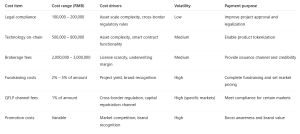SOPH token drops 24.97% after $900M airdrop, despite strong TVL growth

Binance applied a “seed tag” and launched futures trading with up to 75x leverage.
On-chain TVL reached $20.28 million with DEX volume peaking at $47.44 million.
A further 20% supply unlock is scheduled to begin in three months.
Sophon’s utility token, SOPH, fell by 24.97% within 24 hours of its market debut on Binance and several other exchanges, shedding over $80 million from its market capitalisation.
The steep decline followed a large-scale airdrop event in which 900 million tokens—9% of SOPH’s total 10 billion supply—were unlocked and distributed to early contributors, farmers, zkSync users, and NFT holders.
While airdrops are a common strategy to drive initial interest, they often lead to aggressive profit-taking, especially when token utility is still limited.
Binance began SOPH trading at 13:00 UTC on 28 May, shortly after announcing its listing via an X post on 23 May.
Other exchanges, including OKX, KuCoin, Upbit, Bitget, and MEXC, also launched trading support on the same day.
SOPH initially peaked at $0.11 before tumbling to $0.06 within the same day, recording a 24.97% drop.
Market volatility is fuelled by limited utility and high leverage
SOPH’s early volatility is not just a result of the unlocked supply. Binance assigned a “seed tag” to SOPH, categorising it among high-risk tokens prone to volatility.
These tags often caution investors about potential price fluctuations, particularly in new projects.
In addition, Binance Futures listed SOPH with leverage of up to 75x, creating an environment that incentivised speculative trading and amplified price swings.
The trading volume surged by 2,724.8% in the last 24 hours, according to CoinGecko, as early recipients of the airdrop rushed to sell their allocations.
This created a large supply overhang that the current market demand failed to absorb, exacerbating the price decline.
Sophon is built as a Layer 2 blockchain using Validium technology and is part of ZKsync’s Elastic Chain roadmap. It aims to serve as a decentralised infrastructure for entertainment applications.
However, for now, SOPH’s practical utility remains narrow, primarily limited to covering gas fees and contributing to the network’s sequencer decentralisation process.
The lack of immediate use cases appears to have contributed to the weak market support during the sell-off.
Investor interest remains high despite short-term dip
Despite the price drop, on-chain metrics point to rising user engagement.
According to DefiLlama, Sophon’s total value locked (TVL) climbed to $20.28 million on launch day, up 14.1% from the previous day.
Decentralised exchange (DEX) volumes reached $47.44 million, indicating robust participation in token swapping activities.
While speculative activity dominated the launch, the on-chain data shows that interest in the protocol remains strong.
The project has raised over $70 million from investors, including Binance Labs, and has positioned itself as a key Layer 2 player within the zkSync ecosystem.
Looking ahead, the next supply unlock looms large. Another 20% of SOPH’s total supply, designated as node rewards, will begin unlocking on a weekly basis starting three months from the Token Generation Event.
If current market sentiment does not improve or if new utility use cases are not rolled out in time, this influx could trigger further downside pressure.
Roadmap promises more utility, but outlook remains cautious
Sophon has indicated that it intends to broaden SOPH’s use cases in the coming months.
While no specific dates have been given, the team plans to expand the network’s entertainment applications and decentralised tools.
In a recent post, the project team stated that additional products and services would be launched as part of its long-term roadmap.
For now, though, the token’s performance is being closely watched by investors, particularly given its sharp debut correction.
Airdrops have historically proven to be a double-edged sword—driving early adoption, but often at the cost of price stability.













